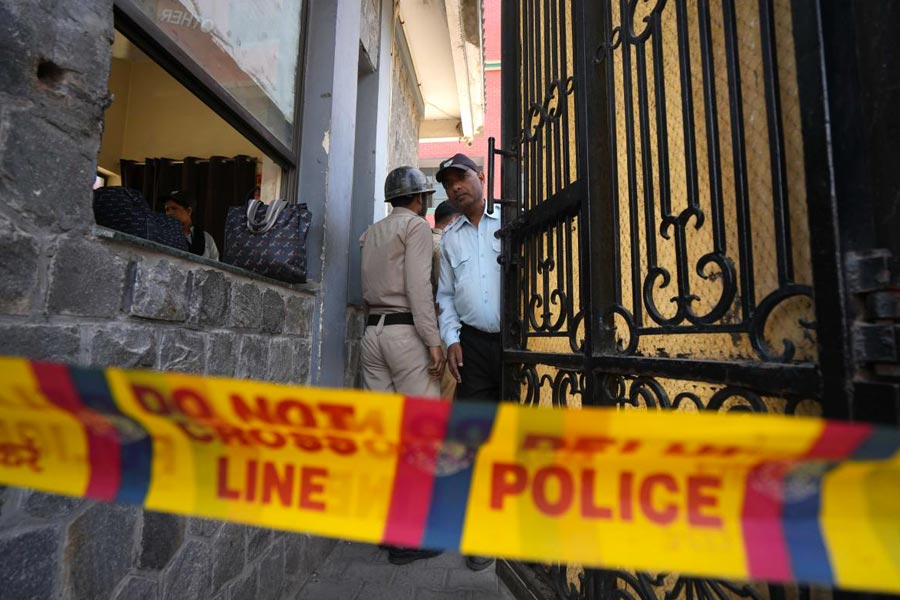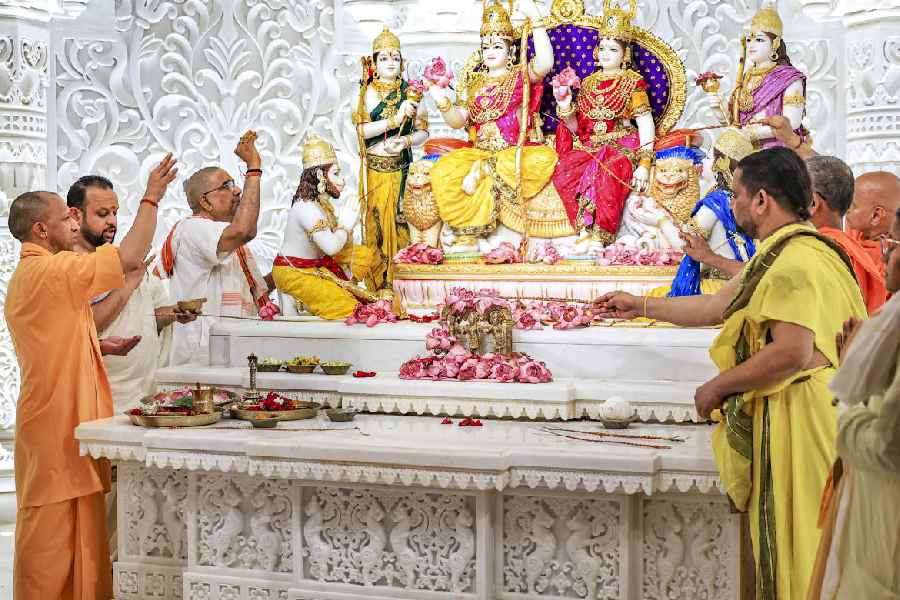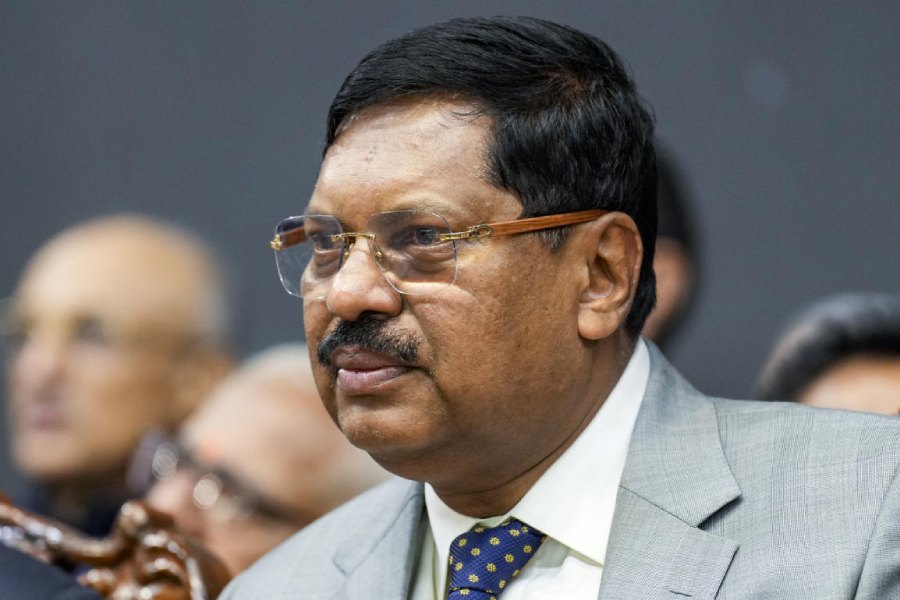|
|
Way to go By Upamanyu Chatterjee,
Hamish Hamilton, Rs 499
Upamanyu Chatterjee’s latest novel, Way to Go, continues the story of The Last Burden (1993). The dysfunctional family of the two brothers, Jamun and Burfi, and their father, Shyamanand, that featured in The Last Burden is at the centre of this novel too. Urmila, Shyamanand’s wife, had died of cancer in The Last Burden, and in Way to Go, the “half-paralysed” Shyamanand disappears mysteriously from his bed one day in the early hours of morning. The musings on the emotional detritus of death that had started in The Last Burden reach their completion here. Chatterjee, like Webster in Eliot’s poem, does seem “much possessed by death”, and less interested in its tragedy than in the “thought [that] clings round dead limbs/ Tightening its lusts and luxuries”. It is fitting that Way to Go ends in a place that clearly is Benaras, although it is left unnamed. In this “holy city”, where the sacred and the profane are interspersed, Jamun at last gives up the search for his lost father only to realize that the one with the capital ‘f’ has not been dead after all, along with the truth that “the holier the city, the better the hash. No wonder they call it Heaven”.
Way to Go opens with a scene that is strongly reminiscent of English, August: An Indian Story (1988). Jamun goes to the police station to report his father’s disappearance. In the constable’s room — with its “glum blue walls”, a doorway without a door, and a flickering tubelight — Jamun has to go through the routine inquiry, which entails answering questions like “Missing person was Male or Female?” or “He had any Love Relationship with anybody?” after having made it clear at the outset that the person in question was Jamun’s 85-year-old father. Anyone who has ever had the misfortune of visiting a police station in India would immediately recognize the atmosphere of sordidness and absurdity created in the episode, which is repeated with variations twice more in the novel, as one of the characters, Naina Kapur, and then Jamun himself, go missing. The grubbiness of the police station sets the scene for the novel, which is dominated by the image of shit. Defecation, death and sex merge into one another in the jumble of Jamun’s thoughts as he ponders the meaning of the filial bond and family ties.
The Jamun of Way to Go is the typical Upamanyu Chatterjee protagonist — genteel, lazy, selfish, struggling with words, fantasizing about death, and a branded loser. Shyamanand’s unexpected disappearance forces him out of his habitual torpor to confront his love for his father which is so unexpected that it is almost like the love that dare not speak its name. After his wife’s death, Shyamanand had come to stay with Jamun, and his housekeeper, Kasibai. Shyamanand soon drove Kasibai away with his bickering, went back to live with the family of his eldest son, Burfi, and then drove Burfi away to Noida. Jamun gave up his job to join Shyamanand in the house the latter had built, considered by him to be the apex of his career as a middle-class government servant. “Their sojourn on the whole had been horrible.... Jamun’s daydreams of suicide dated from approximately that phase of his life.”
Yet when Shyamanand vanishes, he leaves behind a physical void in his prized house, and a spiritual vacuum in the heart of his sons, especially in Jamun. Finally relieved of the “last burden”, Jamun realizes that he does not want to be relieved at all. He is racked with the guilt that he has not cared enough for his ailing father in spite of having once prided himself on his sense of duty. Left alone in the house for the first time in 15 years, Jamun desperately wants his father back, not dead, but alive — with his constipation, his habit of nit-picking, his morbidity, his acid wit, his adoration for all things Bengali, and his attitude of suspicion mingled with admiration towards his sons. What Jamun, locked as he is in his reluctant grief, cannot understand is that Shyamanand, who could no longer walk without a stick after his stroke, is granted the freedom of unimpeded movement in his son’s memory. By disappearing, Shyamanand sets himself, and later his two sons, free — a fact symbolized in the puzzle that he leaves behind his stick when he walks out on Jamun.
“For not having loved one’s dead father enough, could one make amends by loving one’s child more?” — the novel begins with this query. Sparing thought for the first time on the thankless, and the impossibly difficult, task of being a parent, Jamun learns to forgive his father for being cold towards his wife, and callous towards his sons. Shyamanand’s general indifference had made a brute of his elder son and a failure of Jamun. But once Jamun puts himself in his father’s shoes, he can see that Shyamanand had loved his family in his own peculiar way, meticulously keeping records of his sons’ achievements from their schooldays onward, squirrelling away small amounts of money in banks, and making it a point to put Jamun’s name and degrees on the nameplate of his house, much to his son’s disgust. Besides, if it is a truth, universally acknowledged, that the “ones who cared, always, the ones who cared were always absent”, then Shyamanand cannot really be said to have left his sons in direr straits than most parents do. Jamun himself could not even give his name to his biological daughter, Mithi, who calls him “uncle” because her mother, Kasturi, married someone else. In his loose, passive way, he tries to protect Mithi, but finds that there is nothing to protect, since the child is inexorably blundering her way into adulthood, with or without her parents’ help. In the end, perhaps, one can only agree with the old King Lear, who too has thought long and deep on filial ties — “None does offend, none, I say, none.”
Chatterjee had said in an interview that he has written a sequel to The Last Burden because he wanted to redeem some of the characters. The two tortured and lonely brothers are redeemed in the knowledge that “life was everywhere, invincible, surer than fate, than time, more certain than the hiccup of death”. Chatterjee has obviously come a long way from the bleak social satire of English, August. The black humour, the scatological jokes are all there but added to these is a mellowness that had started making its way into Chatterjee’s works from his last novel, Weight Loss (2006).
At the same time, Way to Go would have been better as a short story made of just the first section of the existing three. The complications over the devious real estate agent, Monga, and his mistress, Naina Kapur, verge on the slapstick, and as such, jar. Besides, compared to Jamun, Burfi is a hastily imagined character whose wrestlings with the inner demons are not as convincing as those of his younger brother. The moment Jamun disappears and Burfi takes over, the novel begins to sag.
Chatterjee does seem to be more in love with easeful death than life. Jamun’s ruminations on suicide have a lively quality that no paeans to life can quite match. The progression from death to life is written into the novel’s structure, which repeats and substitutes endings with beginnings. Yet the narrative pull is undeniably backwards, towards the drowsy numbness promised by hash, and finally, by death.











